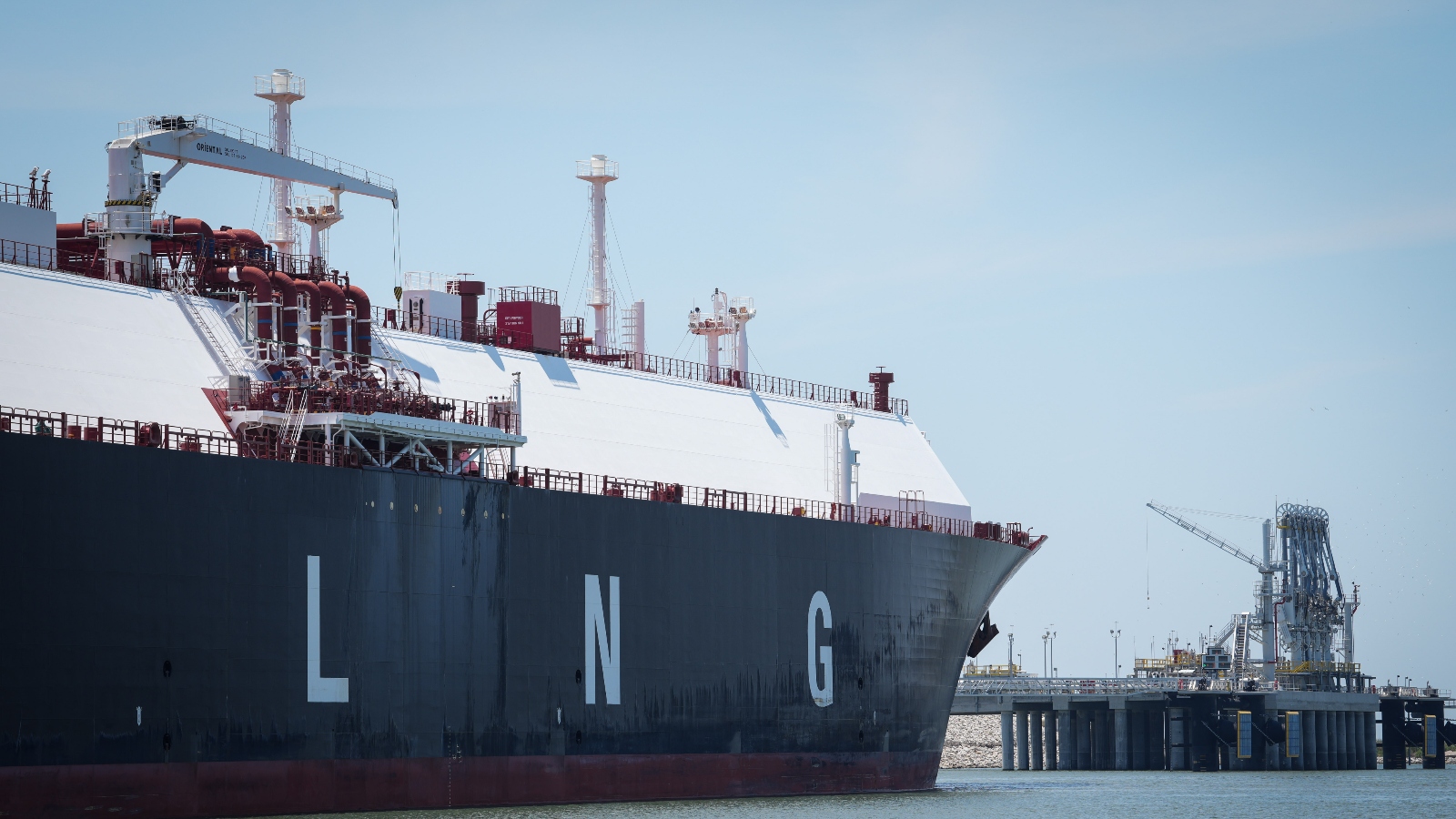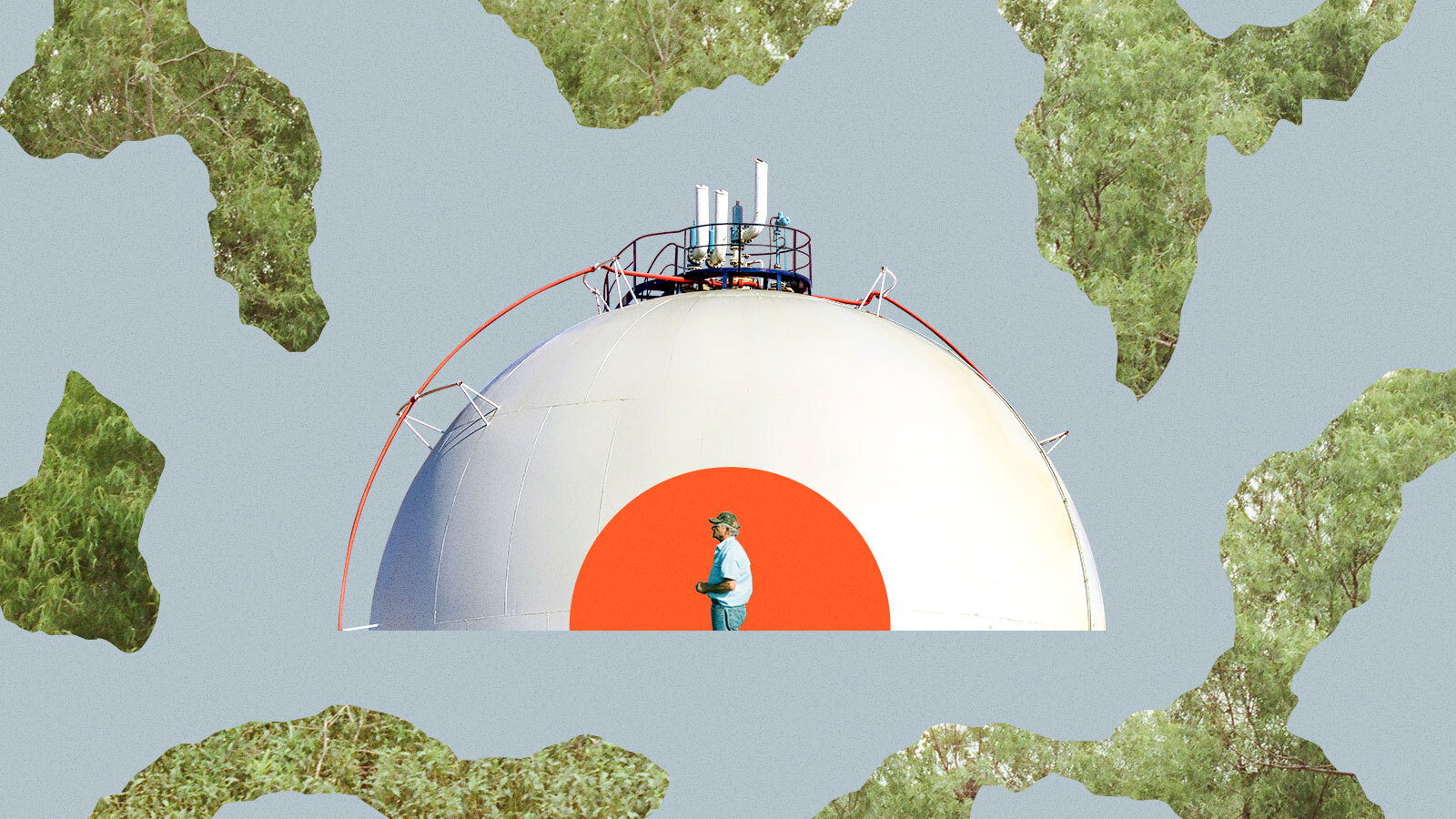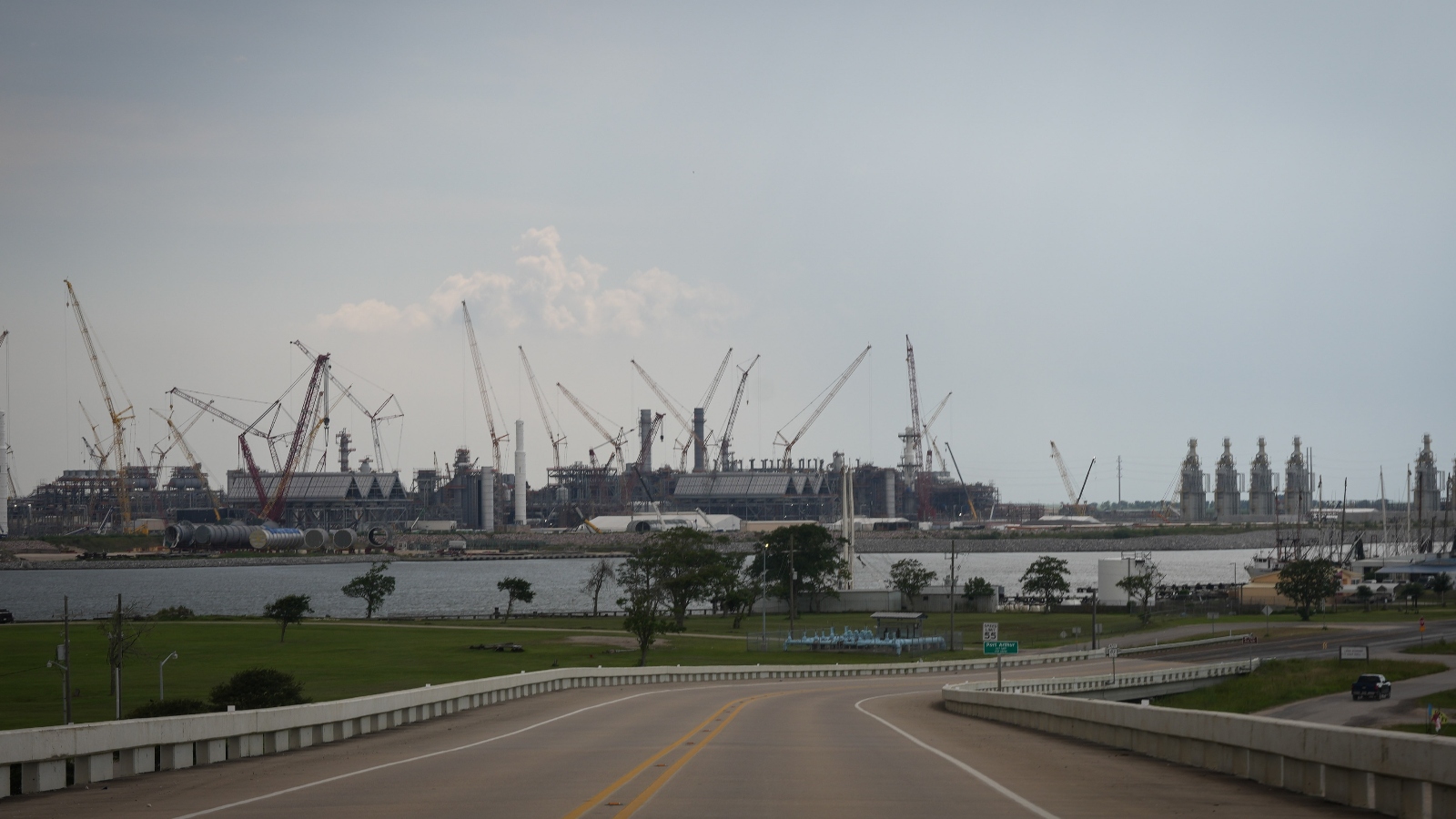
Environmental activists and community organizers on the Gulf Coast have spent years pressuring the Biden administration to halt the construction of terminals that export liquefied natural gas, or LNG. As U.S. production of natural gas skyrocketed over the past few decades, energy companies began building massive coastal facilities to liquefy the fossil fuel and transport it by ship to Europe, Asia, and elsewhere. In response, activists staged protests, organized sit-ins, wrote to members of Congress, and broadly made the issue Biden’s “next big climate test.”
When the administration announced that it would pause its approval of new LNG terminals late last month, the climate movement and its allies were largely credited with the victory. Bill McKibben, the renowned founder of 350.org (and a former Grist board member), began his blog post about the news by saying, “Um, I think we all just won.” The decision reportedly came about after senior administration officials, including White House climate adviser Ali Zaidi, learned that young activists on TikTok were drawing millions of views elevating LNG as a major climate issue.
As if to prove the president was listening, the White House has collected dozens of quotes from climate advocates praising the decision. (In some ways, the activists’ celebration belies the reality that the climate impact of constricting LNG exports is far from certain, and the devil is in the details: While a broader buildout certainly has the potential to promote unnecessary fossil fuel use, it may also speed other countries’ transition away from other, more harmful fossil fuels like coal.)
But a broader, less-climate-concerned coalition, representing thousands of manufacturers, chemical companies, and consumer advocates, has also been quietly pushing for the pause — and stands to benefit if Biden curbs LNG exports. The more American natural gas that’s available to be shipped overseas, they argue, the more unpredictable the price of the fuel will be stateside. If, for example, an unexpected gas shortage in another country means U.S. gas companies can make more money selling their product overseas than they can at home, prices will rise as the supply is stretched thin. This volatility would hurt not only households who heat and power their homes with natural gas, but also the profit margins of big companies that rely on the fuel.
“LNG exports put pressure on domestic markets, which also result in higher energy costs,” said Mark Wolfe, executive director of the National Energy Assistance Directors’ Association, an organization representing state officials who administer federal energy assistance programs, which help low-income households pay energy bills. “There’s an impact on families that are benefiting from these lower prices. That needs to be taken into account.”
Wolfe said that home heating prices have risen more than 16 percent since March 2020, driven in large part by higher natural gas prices. (Hotter summers also mean utilities need more fuel to power a grid stretched thin by air conditioning in the summer, and therefore have less natural gas for heating in the winter.) The result is that one out of six households nationwide are behind on their energy bills.
“If the administration wants to approve these facilities, they should do it in the context of saying, ‘How do we help families pay their bills?’” Wolfe added.
It’s not just cash-strapped families that might benefit if LNG exports are limited: The Industrial Energy Consumers of America, or IECA, a trade group representing more than 11,000 manufacturing facilities nationwide, has also been arguing against LNG exports. IECA’s members include fertilizer companies, aluminum smelters, and glass manufacturers, among others. These industries are heavily dependent on natural gas either as feedstock for production or to fuel their operations. As natural gas prices rose in 2022, heavy industries that require large amounts of natural gas or electricity — such as fertilizer production and aluminum smelting — saw their costs skyrocket. That year, multiple steel mills as well as the country’s second-largest aluminum smelter paused operations in the face of unsustainable costs.
Paul Cicio, IECA’s president, has been imploring the federal government to curb natural gas exports since the Obama administration. The last three presidential administrations “have just ignored consumers’ interests,” Cicio told Grist.
Biden’s team seems to hope to change this perception. In announcing the pause last month, senior administration officials said that the relationship between exports and domestic prices is one of the main topics they plan to study, in addition to climate and environmental impacts, as they consider whether to resume permitting more export terminals.
In a call with reporters, Zaidi said that the decision reflected Biden’s “aggressive approach to cutting costs for consumers.” He noted that manufacturing groups like IECA had been pushing the administration for price relief, making common cause with climate advocates.
“You saw, even today, different manufacturers from around the country who represent a diversity of manufacturing interests here in the United States, raising concerns, asking the department to study the impact of expanded exports on reliability and on prices,” he said.
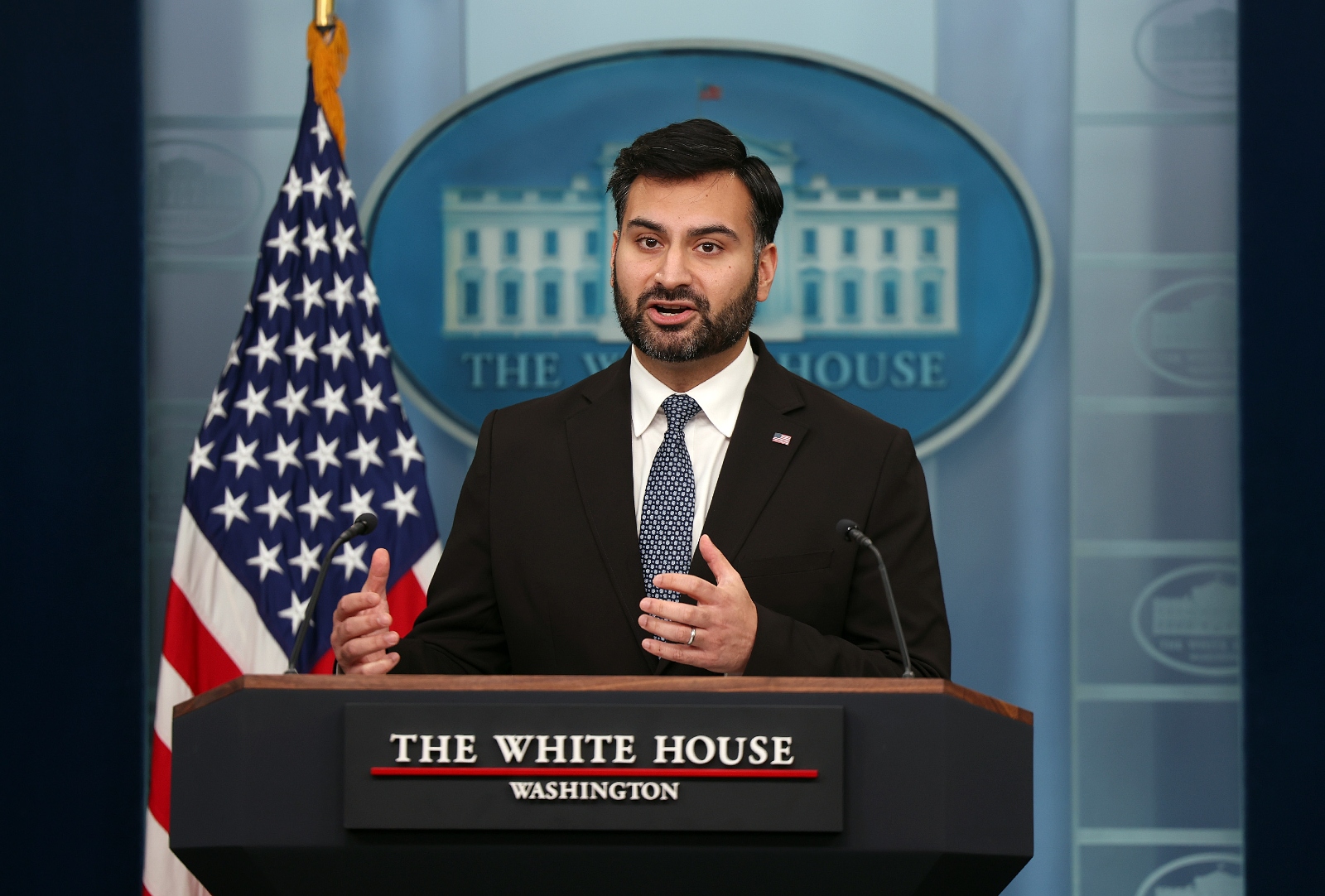
In an interesting twist, many of the manufacturers who would benefit from a permanent halt to the LNG buildout have themselves been the target of campaigns by the very same Gulf Coast activists who pushed the pause. IECA member companies Mosaic and CF Industries operate some of the nation’s largest fertilizer plants in the polluted Louisiana region known as “Cancer Alley,” and they have been accused by environmental activists of harming nearby communities with toxic emissions. Natural gas is a key ingredient in fertilizer production, so these companies would take a direct hit if gas prices rise. As members of IECA, they’ve found themselves on the same side of the LNG debate as environmental groups like the Louisiana Bucket Brigade, which coordinated several protests against gas export terminals.
The United States has only been exporting LNG in large quantities for about eight years, but a growing body of data shows that these exports do influence domestic natural gas prices. The Energy Information Administration, for instance, has found that increasing LNG exports “results in upward pressure on U.S. natural gas prices.” The agency projected that, if additional LNG terminals are built and exports increase, domestic prices could increase by 25 percent by 2050.
This has not always been the dominant point of view. In approving past LNG terminals, the Department of Energy assessed whether the facilities would promote the public interest. Over the years, the agency has commissioned a series of reports addressing the issue and repeatedly come to the conclusion that more exports would actually improve consumer welfare. An analysis conducted during the Trump administration found that, as exports increased, domestic production of natural gas also rose, mitigating the harm of supply shortages and ultimately resulting in more jobs and higher wages. The study also concluded that households that held shares of stock in LNG companies stood to benefit from their profits.
“These additional sources of income for U.S. consumers outweigh the income loss associated with higher energy prices,” the report noted.
That study, however, has been criticized for making faulty assumptions about families’ investments in natural gas exporters, and the Energy Department is expected to undertake a new round of analyses assessing both the climate and economic impacts of exporting LNG.
To be sure, domestic prices won’t automatically and permanently increase as a result of U.S. exports. Rather, price trends in Europe and Asia will have a much stronger influence on prices stateside than they once did. This has always been the case in the oil market, which is why political decisions in the Middle East can cause gasoline prices to rise or fall in the United States — but it hasn’t been the case for natural gas until now.
Tyson Slocum, an energy director at the consumer advocacy group Public Citizen, refers to this as “importing volatility.” By allowing gas producers to ship a substantial share of American supply overseas, the United States is signing up for a much more volatile and unpredictable energy market. If prices rise in Europe or Asia as a result of a war or political disruption, heating bills and manufacturing bills in the United States will rise as well.
“All it takes is one mishap, one outage, one issue, and you will experience significant price volatility during those moments,” said Slocum.
For example, when an explosion in the summer of 2022 shut down Freeport LNG, one of the nation’s largest export terminals, the loss of export capacity helped weigh down domestic gas prices and prevented high energy bills the following winter. Each time the company announced it was moving toward restarting the terminal, the cost of purchasing natural gas on the market rose; with every delay in the restart, it fell again.
Limited pipeline capacity is one reason for the price crunch. Large-scale natural gas buyers typically purchase capacity in a pipeline, locking in the transportation infrastructure needed to move natural gas from oil and gas fields to their facilities. As a result, utilities and manufacturing companies are often competing with LNG terminals for pipeline capacity.
“LNG terminals have market power over us,” said Cicio, the manufacturers’ representative. “They get 20-year contracts from countries like China, and they lock in firm pipeline capacity for 20 years.”
That means that even if natural gas production is at an all-time high, pipeline capacity can prove to be a bottleneck. With fewer pipelines being built, manufacturers are increasingly struggling to compete with LNG companies, Cicio added.
These restrictions are leading to higher costs for consumers, analysts have found. Clark Williams-Derry, an energy finance analyst at the Institute for Energy Economics and Financial Analysis, a think tank, looked at long-term natural gas prices and compared them against the prices since the pandemic. He found that U.S. consumers — including homeowners, utilities, and industrial customers — would have spent about $111 billion less on natural gas between September 2021 and December 2022 absent the price spikes that resulted from the Russian invasion of Ukraine, when European countries abruptly ditched their Russia-provided gas and desperately sought it from elsewhere, including from U.S. exporters.
“This is a way for the industry to siphon money out of consumers’ wallets and into the gas industry within the U.S.,” said Williams-Derry.
Critics of Biden’s pause argue the decision may affect international energy security, especially for America’s allies — like the NATO members who faced energy shortages after the sudden loss of Russian gas. “The Biden administration’s freeze on LNG projects is a gift to Putin,” Mike Sommers, the president of the American Petroleum Institute, the largest oil and gas trade group in the U.S., wrote in a recent column. But the benefits of the LNG export industry’s growth to American national security, and international energy security, are growing outdated.
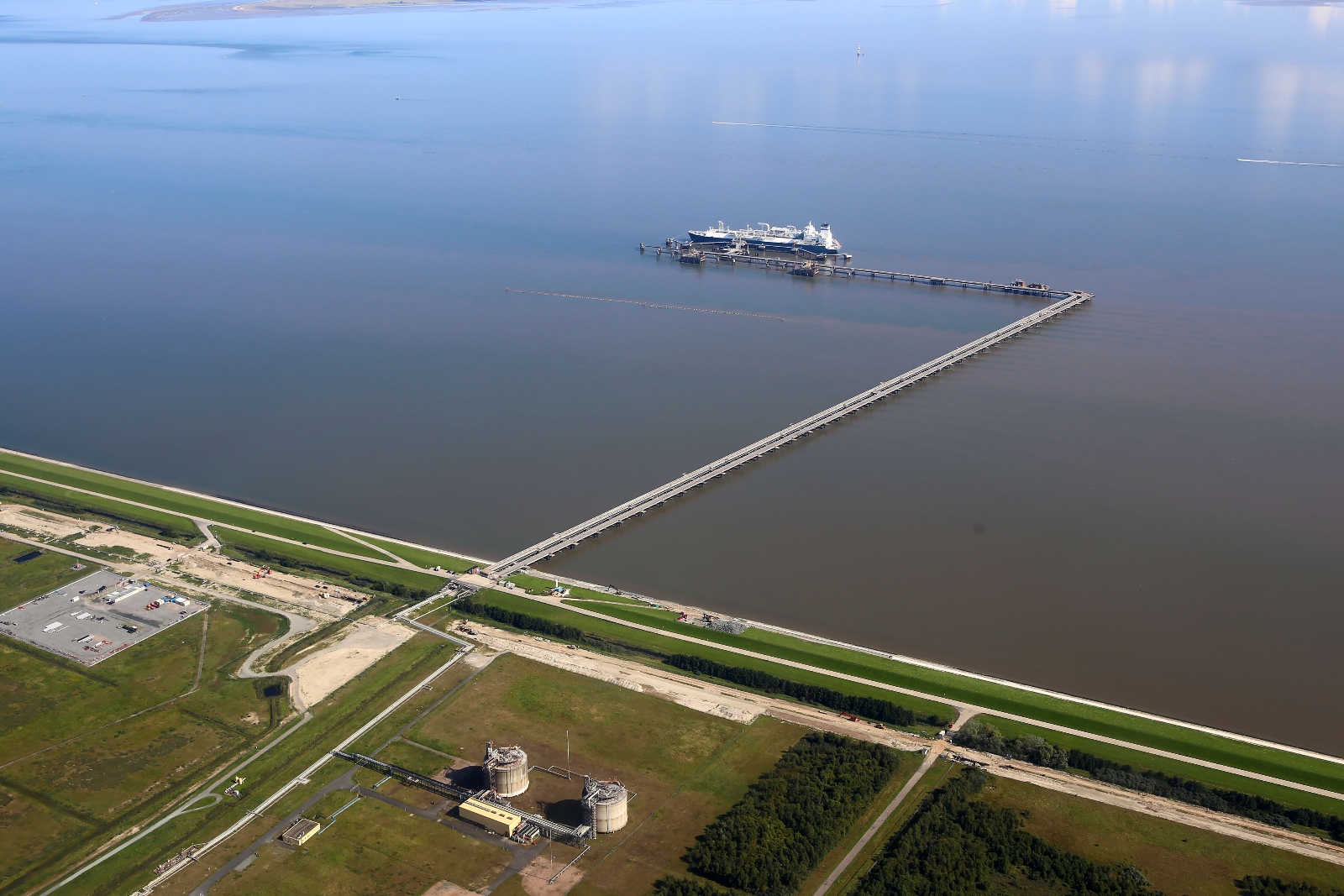
For decades, Europe has imported cheap and abundant gas from Russia via pipeline. The energy relationship between the two geopolitical powers has given Russia political leverage over Europe — a dynamic that was thrown into particularly sharp relief when Russia invaded Ukraine in 2022. Europe could only punish President Vladimir Putin so much for starting an unprovoked war, given that it continued to rely on Russian gas to heat its homes.
The LNG export industry, and even Biden himself, advocated for using natural gas exports as a bludgeon to beat back Russian influence in Europe. But since then Europe has been diversifying its gas resources, building out LNG import infrastructure, and stockpiling natural gas thanks to ever-larger imports of American gas. Its position now is far less precarious than it was in the early 2000s, or even than it was a couple of years ago. Last month, a long list of left-leaning European lawmakers signed an open letter to Biden, saying that Europe’s LNG demands are already being met by existing import infrastructure
“Europe should not be used as an excuse to expand exports that threaten our shared climate and have dire impacts on U.S. communities,” the European members wrote.
U.S. Representative Sean Casten, a Democrat from Illinois, is suspicious of industry claims, particularly as they apply to Europe in 2024. “We know that the forward contracts for the new gas that’s going in are primarily going to Asia, not to Europe,” he told Grist.
South Korea, Japan, India, and China are all growing gas markets for American LNG exporters. The industry’s chief focus isn’t international energy security — it’s making sure it has somewhere to sell its product, particularly as the U.S. continues to pivot to renewable sources of energy. (Representatives for the Natural Gas Supply Association and the Center for LNG, which represent LNG exporters, did not respond to a request for comment.)
“For the producing industry to survive, they have to export,” Casten said. “Their success depends on access to export markets.”
While natural gas producers stand to benefit from more exports and price spikes, low-income American families bear the brunt of market expansion and volatility. Wolfe, the executive director of the National Energy Assistance Directors’ Association, said families signed up for energy assistance in record numbers over the last few years, and a record number are in debt to their utilities. In fiscal year 2023, 7.3 million households received some form of energy assistance — a 25 percent increase from the previous year.
“We’re worried,” said Wolfe. “The nation needs a better strategy to help families.”
